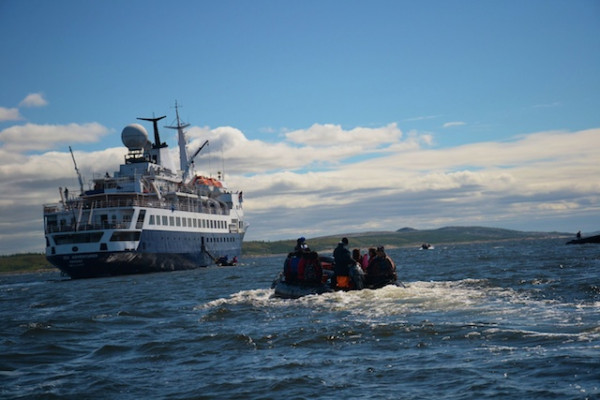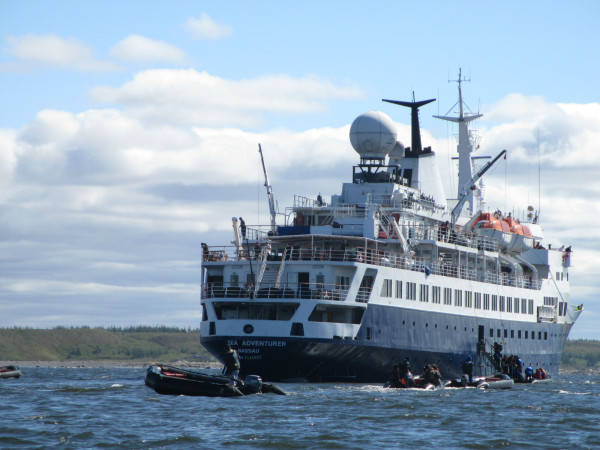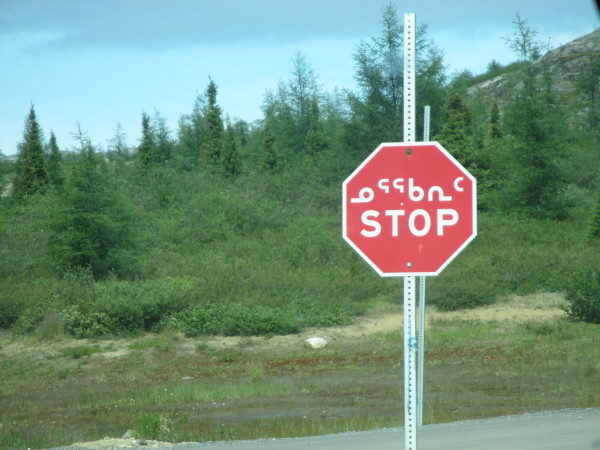Students on Ice: To the Arctic
Written By: Sue Novotny, Communications Officer, Global Arctic Program, WWF
WWF is part of a “Students on Ice” expedition from Arctic Canada to Greenland, both sponsoring students, and helping give the students useful skills. WWF staff member Sue Novotny is on board, and is sharing her experiences from the expedition in a special five-part blog series.
Gathering in Ottawa When you fill a room with 80 high school students, the last things you might expect are impromptu bouts of throat singing and language lessons in Inuktitut and Greenlandic. But the students I’ve joined in Ottawa this week are a special bunch. They’re leaders, young scientists and academic superstars about to head out on an incredible journey. Most people will never sail into the Arctic, fish for char in Torngat Mountains National Park, or visit communities along Greenland’s coast. But that’s our itinerary for the next two weeks, on the 2014 Students on Ice Arctic Expedition.
A quarter of the students are from northern Canada and Greenland. It’s been really inspiring to see their excitement over the past few days at meeting students from other parts of the Arctic and the world, and sharing their culture and language. WWF is proud to sponsor northern students on this expedition each year. The best Arctic ambassadors of the future will be the young people who live there today. I’ll be sharing stories from our students — Paninnguaq from Greenland and Tat from Nunavut — as we go. Tomorrow, we head north!
On the path to Kuujjuaq As a dual citizen of Canada and the US, I’m often asked what difference there really is between the two countries. America is a vast and varied country, but there are few places you can’t drive to on a well-manicured road. From my home in Ottawa, I can drive north just a few hundred kilometres before the roads turn to logging roads, then disappear. But thousands more kilometres of Canada stretch out beyond. It’s telling that the geographic centre of Canada is not around Winnipeg, as many assume, but Baker Lake, Nunavut, near the Arctic Circle. This is a vast country, and the Arctic comprises a huge part of it. The north is therefore part of the national identity and mythologies of Canada.
Though we can’t drive to most of Canada, it’s by no means uninhabited. Canada’s north is dotted with communities, largely home to indigenous people. The flight we’re on today to Kuujjuaq has half its windows blocked out. That’s the cargo hold, a lifeline for supplies from the south. Kuujjuaq is the first of many communities that we’ll visit in Quebec, Labrador and Greenland. The northern students are excited to see the people and places that are so difficult to visit, but connected by ancient culture and language.




